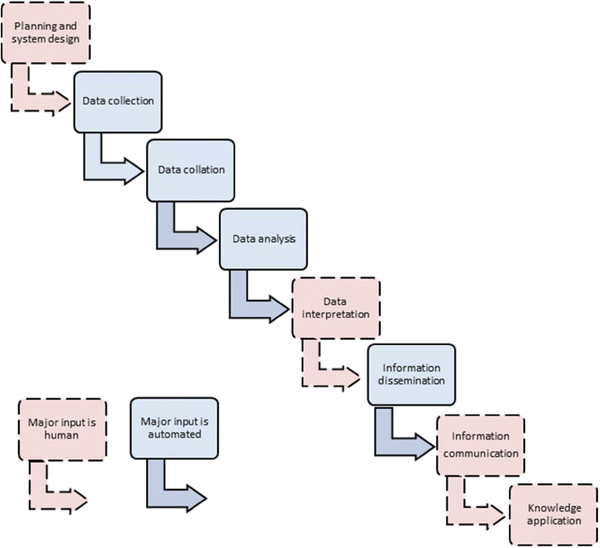Methods of nutrition surveillance in low-income countries
- PMID: 26997966
- PMCID: PMC4797352
- DOI: 10.1186/s12982-016-0045-z
Methods of nutrition surveillance in low-income countries
Abstract
Background: In 1974 a joint FAO/UNICEF/WHO Expert Committee met to develop methods for nutrition surveillance. There has been much interest and activity in this topic since then, however there is a lack of guidance for practitioners and confusion exists around the terminology of nutrition surveillance. In this paper we propose a classification of data collection activities, consider the technical issues for each category, and examine the potential applications and challenges related to information and communication technology.
Analysis: There are three major approaches used to collect primary data for nutrition surveillance: repeated cross-sectional surveys; community-based sentinel monitoring; and the collection of data in schools. There are three major sources of secondary data for surveillance: from feeding centres, health facilities, and community-based data collection, including mass screening for malnutrition in children. Surveillance systems involving repeated surveys are suitable for monitoring and comparing national trends and for planning and policy development. To plan at a local level, surveys at district level or in programme implementation areas are ideal, but given the usually high cost of primary data collection, data obtained from health systems are more appropriate provided they are interpreted with caution and with contextual information. For early warning, data from health systems and sentinel site assessments may be valuable, if consistent in their methods of collection and any systematic bias is deemed to be steady. For evaluation purposes, surveillance systems can only give plausible evidence of whether a programme is effective. However the implementation of programmes can be monitored as long as data are collected on process indicators such as access to, and use of, services. Surveillance systems also have an important role to provide information that can be used for advocacy and for promoting accountability for actions or lack of actions, including service delivery.
Conclusion: This paper identifies issues that affect the collection of nutrition surveillance data, and proposes definitions of terms to differentiate between diverse sources of data of variable accuracy and validity. Increased interest in nutrition globally has resulted in high level commitments to reduce and prevent undernutrition. This review helps to address the need for accurate and regular data to convert these commitments into practice.
Keywords: Anthropometry; Low-income; Malnutrition; Monitoring; Nutrition assessment; Program evaluation; Public health; Surveillance; Surveys; Timely warning.
Figures
References
-
- WHO. Methodology of nutritional surveillance. Report of a Joint FAO/UNICEF/WHO Expert Committee. Geneva: World Health Organization; 1976. http://whqlibdoc.who.int/trs/WHO_TRS_593.pdf. (Accessed 1 June 2015). - PubMed
-
- Tuffrey V. A perspective on the development and sustainability of nutrition surveillance in low-income countries. BMC Nutr. 2016;2(1):1–18. doi: 10.1186/s40795-016-0054-x. - DOI
-
- Mason J, Habicht JP, Tabatabai H, Valverde V. Nutritional surveillance. Geneva: World Health Organization; 1984.
LinkOut - more resources
Full Text Sources
Other Literature Sources
Miscellaneous



